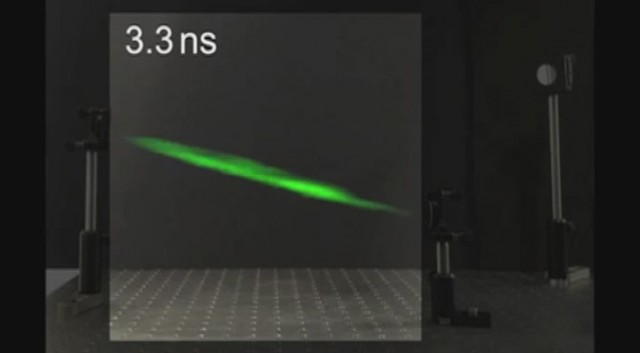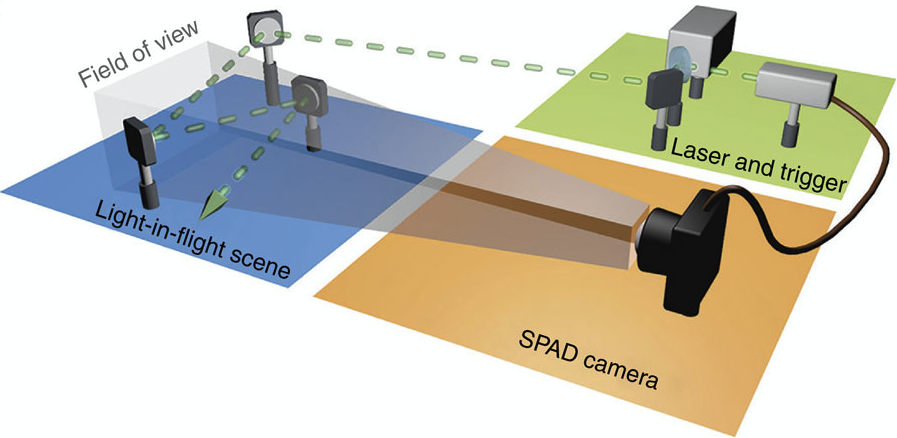
Discovering that real-life laser beams look nothing like the segmented, slow-moving beams of light fired from X-Wings was one of my greatest childhood disappointments, up there with death and Santa Claus’ fictional existence. Laser pulses in flight are impossible to see because they, more or less, travel at the speed of light (6.71×108 mph or 1.08×109 km/h). Unless of course you’re a member of the team of physicists at Heriot-Watt University in Edinburgh, UK, who have constructed a new type of high-speed camera strictly to film a laser bouncing off mirrors.
Technically speaking, you can see laser beams in action, but only solid, continuous beams that have had their photons scattered by outside molecules from smoke, water vapor, or sometimes air; it’s why laser beams are visible during concerts but invisible in vacuums.
To film their laser pulse in motion, the team of physicists, led by PhD student Genevieve Garipey, leveraged the same principle of light scattering, but in air, and at a faster rate. Since air scatters less light than either smoke or fog, the camera used to film the video above needed to be extremely sensitive, consisting of a 32×32 pixel grid of single-photon avalanche diodes (SPAD) detectors that permit an extremely accurate temporal resolution, or precise measurement with respect to time.
Under these guidelines, the SPAD camera had a temporal resolution of 67 picoseconds (0.000000000067 seconds) that allowing it to capture approximately 20 billion frames per seconds, enough to locate and photograph a single photon within a few centimeters; the camera is practically photographing light. In addition, the camera was synced with the laser emitter to know the exact time the pulse is released.

Although the SPAD camera is extremely sensitive, it can only discern a few photons scattered from the beam. As a result, the video could only be compiled by blending 2 million pulses fired over the course of 10 minute and subtracting the background.
Essentially, the experiment proves that that it’s possible to visualize a laser in flight without direct interference. Speaking of direct interference, other Scottish physicists , this time from the University of Glasgow, have managed to slow down the speed of light by running it through a mask, rather than a denser medium such as glass or water.
Source: ExtremeTech
Advertisement
Learn more about Electronic Products Magazine





